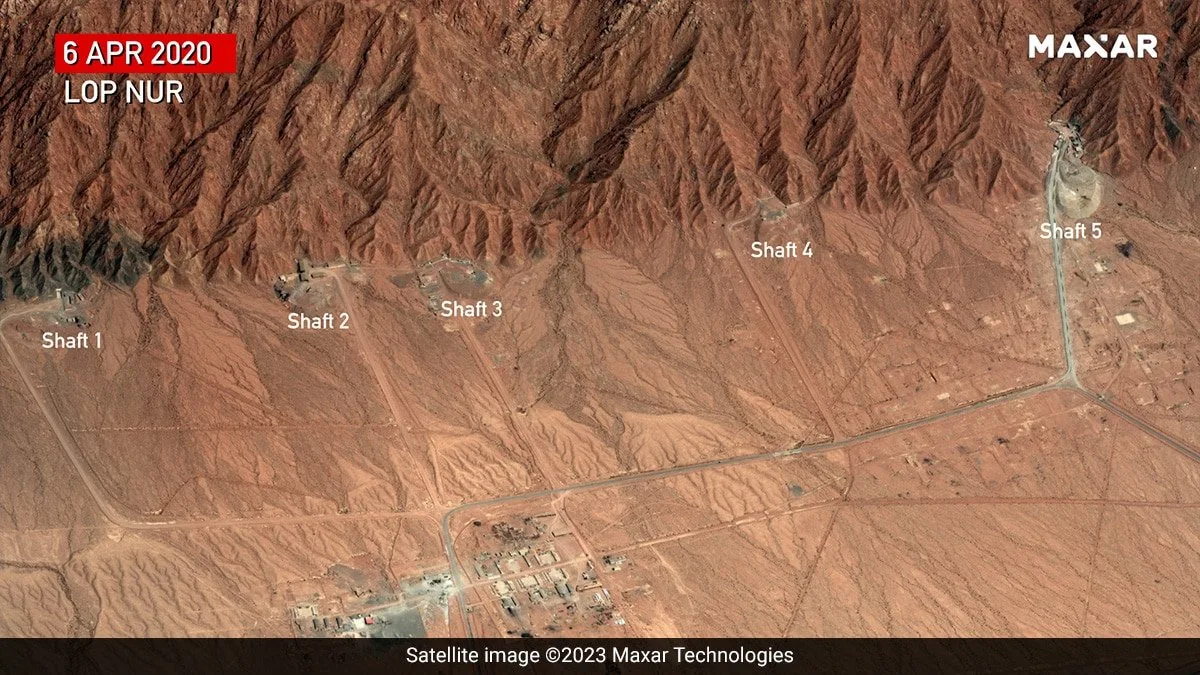
Amidst heightened geopolitical tensions, satellite images have reignited concerns about China’s nuclear ambitions. Recent visuals captured over the Lop Nur nuclear test site in western China suggest possible preparations for a new generation of nuclear weapons testing. This development has sent ripples through the international community, raising questions about China’s intentions and the potential consequences for global security.
Lop Nur, located in the remote Xinjiang Uyghur Autonomous Region, has a dark history as China’s primary nuclear testing ground since the 1950s.
Over 45 nuclear tests, including the detonation of their first atomic bomb in 1964, have been conducted at this desolate site.
The environmental and human costs of these tests have been severe, with long-lasting radioactive contamination and health issues plaguing the surrounding areas.
The recent satellite images, obtained by the New York Times and other media outlets, reveal several worrying developments at Lop Nur. These include:
- Excavation and construction around horizontal testing tunnels: These tunnels were used for past nuclear tests, and their reactivation suggests potential preparations for future detonations.
- A deep vertical shaft: The purpose of this shaft remains unclear, but it could be linked to data collection or weapon assembly.
- Expansion of Lop Nur Airfield: This could indicate increased logistical activity in support of potential testing.
- Construction of new roads: Improved infrastructure around the site could facilitate faster mobilization and testing activities.
Expert Analysis Adds to the Concern
Nuclear experts have expressed alarm at these developments. Tong Zhao, a nuclear proliferation scholar at the Carnegie Endowment for International Peace, told the New York Times that “all the evidence points to China making preparations that would let it resume nuclear tests.”
Other experts point out that even if full-scale detonations are not imminent, China could be conducting subcritical tests, which involve smaller explosions used to refine weapon designs without triggering atmospheric fallout.
Global Implications and Uncertain Future
China’s potential resumption of nuclear testing would have significant global repercussions. It could trigger a new arms race, undermine existing non-proliferation treaties, and further destabilize regional security dynamics. The international community, particularly the United States and other nuclear-armed nations, is closely monitoring the situation and urging China to remain committed to nuclear disarmament efforts.
However, China’s official stance remains opaque. They have neither confirmed nor denied plans for further nuclear testing, further fueling speculation and anxieties. The coming weeks and months will be crucial in determining whether these satellite images represent a worrying trend or simply routine maintenance at a Cold War relic.
The potential resumption of nuclear testing by China raises serious concerns about nuclear proliferation and global security. While the full extent of China’s intentions remains unclear, the satellite images from Lop Nur serve as a stark reminder of the devastating consequences of nuclear weapons and the urgent need for continued international efforts towards nuclear disarmament.

